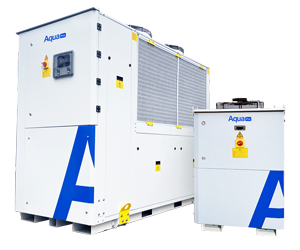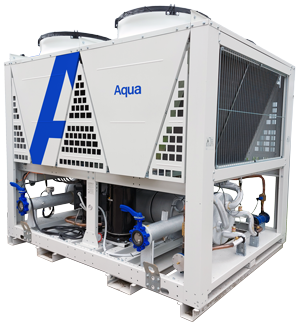Low temperatures and harsh winter conditions put your chillers and HVAC equipment under added pressure – particularly if they’re sited outdoors.
When the ambient temperature drops, the water in your chilled water system can contract by up to 9% in volume. This potentially can cause a breakdown with a significant amount of damage to
components and pipework.
With so many facilities in the process of re-opening, some running with reduced staff levels and others between maintenance contracts, we’ve created some steps you can take to help keep your chillers and cooling equipment running efficiently.
1. Have you maintained the correct Glycol levels?
By dosing your system with the correct level of glycol and maintaining this, you will prevent the water from freezing and causing damage to your system – minimising the risk of downtime and cost to your operation.
Most glycols these days also contain biocides and inhibitors that are essential for your systems continued health. Drops in this can cause bacterial blooms or electrolytic action which can strip aluminium and copper from your system.
With so many facilities in the process of re-opening, some running with reduced staff levels and others between maintenance contracts, we’ve created some steps you can take to help keep your chillers and cooling equipment running efficiently.
Rapid temperature drops can cause the water in your chilled water circuit to freeze quickly if it has not been dosed correctly with glycol. This can result in expansion which can lead to fractured pipework or at worst, burst pipes.
2. Have you checked the trace heating?
Your chiller pipework may be protected from freezing with trace heating tape.
If so, visually check the tape for any corrosion or damage, including any connections, to ensure it
continues to protect your pipework.
Due to the nature of this task, it would be advisable to get our Service Engineer to carry out more in depth checks and analysis, so that any fixes can be made safely, with the correct equipment to hand.
3. Check for blocked strainers
Your chiller’s strainer protects the pumps, heat exchangers and all other vital components from particles or contaminants.
Strainers can easily become blocked by scale, corrosion, biofilm, weld slag, dirt, iron oxides, and suspended solids. When the strainer is blocked, it can lead to pipe blockages, failed pumps and
then potentially make them susceptible to freezing issues.
4. Try cleaning coils and condenser fans
Winter conditions can cause condenser coils and fans to work even harder.
By keeping them free from debris such as leaves and dirt, you will help to increase the efficiency of your chiller system – thereby reducing your operating costs. A blocked condenser will inhibit the rejection of heat, and a dirty coil can reduce airflow drastically. For each 10% reduction in airflow, the efficiency of the chiller drops by about 20%. If your chiller is fitted with a free cooling system, this will reduce the performance and therefore increase your energy costs.
Aqua Planned Preventative Maintenance Programs
Chilled water systems require regular maintenance checks and servicing to keep them running smoothly and efficiently.
Aqua provide Planned Preventative Maintenance programs, tailored to your business and operation. Our highly qualified, dedicated engineers get to know you, your business and facilities inside out – enabling them to provide a personal, consistent and exceptional standard of service.
To discuss how we can help improve the efficiency and maintenance of your chilled water systems,
please call on 0333 004 4433 or email service@aquacooling.co.uk.
Download the tips here.




